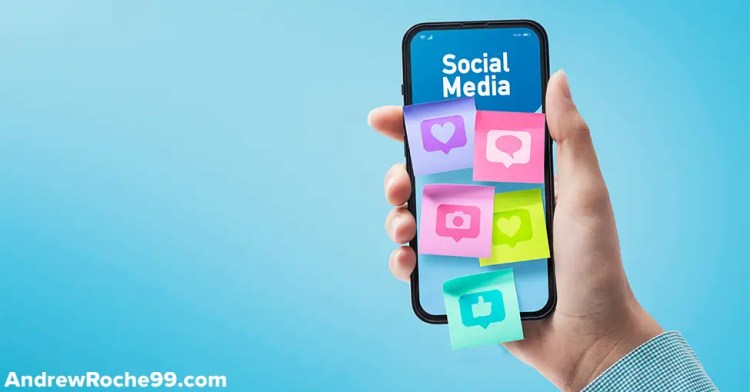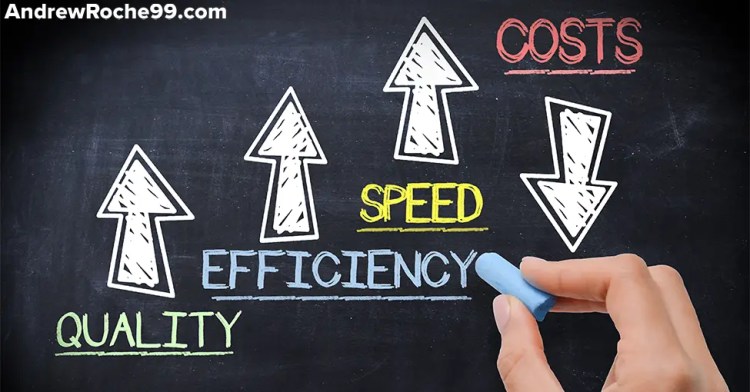In today’s digital age, social media sales funnels are a critical component of successful marketing. With billions of users, social media provides an unparalleled opportunity. Social media allows you to reach your target audience, engage with them, and guide them through the buying process. Building a powerful social media sales funnel is essential for driving conversions. An effective social media funnel also helps increase brand awareness and boost your online sales.
In this comprehensive guide, we’ll explore the importance of social media sales funnels and provide a step-by-step roadmap to create a high-performing funnel that effectively converts prospects into loyal customers. So, let’s dive in and unlock the potential of social media to grow your business!

Understanding the Social Media Sales Funnel
To create a successful social media sales funnel, it’s crucial to understand its core components and the role that social media plays in driving customers through the buying journey.
What is a Social Media Sales Funnel?
A sales funnel is a marketing model that visualizes the customer journey from the initial stage of becoming aware of your brand to the point of making a purchase and becoming a loyal customer. The sales funnel is typically divided into four key stages:
Awareness
At this stage, potential customers discover your brand and become aware of your products or services. Your goal here is to grab their attention and provide valuable content that educates and informs them.
Consideration
Prospects have now identified a need and are actively considering your brand as a potential solution. During this stage, you’ll want to showcase your expertise, offer social proof, and address any concerns or objections they might have.
Conversion
At this point, prospects are ready to make a purchase decision. You need to provide compelling offers, incentives, and a seamless buying experience to convert them into customers.
Loyalty
After the purchase, you’ll want to nurture the relationship with your customers, provide excellent support, and encourage repeat business and referrals.
Importance of Social Media Sales Funnels
Social media platforms play a vital role in sales funnels by offering numerous advantages, such as:
Reach & Engagement
Social media provides access to a vast audience, allowing you to reach potential customers from all around the world. It also enables you to engage with your audience in real-time, fostering meaningful connections and conversations that build trust and credibility.
Target Audience Accessibility
Social media platforms offer advanced targeting options, making it easier than ever to connect with your ideal customers based on their demographics, interests, and behaviors.
Building Trust & Brand Loyalty
Consistently sharing valuable content, responding to comments and messages, and showcasing your brand’s personality on social media help to build trust and loyalty among your audience. This is essential for driving conversions and creating long-lasting customer relationships.
Building a Powerful Social Media Sales Funnel

Constructing an effective social media sales funnel requires careful planning and execution. By setting clear goals, understanding your target audience, and choosing the right platforms, you’ll be well on your way to building a sales funnel that drives results.
Setting Goals & Objectives
The first step in building your social media sales funnel is establishing clear goals and objectives. These should be specific, measurable, achievable, relevant, and time-bound (SMART). Some examples of goals include:
- Increase brand awareness by 25% within six months.
- Generate 100 new leads per month through social media.
- Boost online sales by 15% within three months.
Having measurable goals helps you track your progress and determine the effectiveness of your sales funnel, allowing you to make informed decisions for optimization.
Identifying Target Audience
A deep understanding of your target audience is crucial for creating a successful social media sales funnel. To do this, you’ll need to:
- Research Demographics: Gather data on the age, gender, location, and income levels of your ideal customers.
- Identify Interests and Pain Points: Understand your target audience’s hobbies, interests, and the challenges they face that your product or service can help solve.
- Understand Buying Behavior: Learn about the factors that influence your audience’s purchasing decisions, such as price, convenience, or brand reputation.
Selecting the Right Social Media Platforms
Choosing the appropriate social media platforms for your sales funnel is vital for maximizing reach and engagement with your target audience. Here are some tips for selecting the right platforms:
Align Platforms with Target Audiences and Goals: Pick platforms that cater to your target audience and align with your marketing objectives. For instance, if your goal is to generate leads, LinkedIn might be a better choice than Pinterest.
Consider Business Type: Different platforms work better for different types of businesses. For example, B2B companies might find more success on LinkedIn, while consumer brands might excel on Instagram or TikTok.
By setting clear goals, understanding your target audience, and selecting the right social media platforms, you’ll create a solid foundation for building a powerful social media sales funnel that drives conversions and boosts your online sales.
Creating Engaging Content

Crafting engaging content tailored to each stage of the sales funnel is essential for guiding your audience through the buying journey. Here, we’ll discuss different content types for each stage of the funnel and the importance of creating a content calendar.
Content Types for Different Stages of the Sales Funnel
Awareness Stage
At this stage, your goal is to grab your audience’s attention and provide valuable information. Content types for the awareness stage might include:
- Educational blog posts
- Infographics
- Social media posts that entertain or inspire
- Videos that showcase your brand’s personality or address industry trends
Consideration Stage
As prospects begin to consider your brand as a potential solution, you’ll want to showcase your expertise and provide social proof. Content types for the consideration stage might include:
- Case studies
- Testimonials and reviews
- Webinars or live Q&A sessions
- In-depth guides or e-books
Conversion Stage
At this point, your audience is ready to make a purchase decision. Content types for the conversion stage might include:
- Product demonstrations or tutorials
- Exclusive offers or discounts
- Time-sensitive deals or limited-time promotions
- Comparison charts that highlight your product’s advantages over competitors
Creating a Content Calendar

A content calendar is a vital tool for organizing and scheduling your social media content. Here are some benefits of using a content calendar and elements to include:
Benefits of a Content Calendar
- Ensures consistency in posting, which is crucial for building trust and engagement
- Helps you plan ahead, so you’re never scrambling for content at the last minute
- Allows for easy coordination among team members
- Enables you to plan content around key dates, events, or product launches
Elements to Include in a Content Calendar
- Planned posting dates and times
- Social media platforms where content will be shared
- Content types (e.g., blog post, video, infographic)
- Themes or topics for each piece of content
- Deadlines for content creation and approval
By creating engaging content tailored to each stage of the sales funnel and utilizing a content calendar, you’ll effectively guide your audience through the buying journey, ultimately driving more conversions and growing your business.
Leveraging Social Media Advertising to Fuel Your Social Media Sales Funnel

Social media advertising plays a significant role in boosting the effectiveness of your sales funnel. By using paid ads for top-of-funnel prospects and retargeting for middle and bottom-of-funnel prospects, you can increase your reach and conversions.
Paid Ads for Top-of-Funnel
Top-of-funnel prospects are those who have just become aware of your brand. Paid ads can help you reach and engage with a larger audience, driving more prospects into your sales funnel. Some benefits of paid ads include:
Increased Reach
Paid ads allow you to tap into a larger audience beyond your existing followers, ensuring your message reaches more potential customers.
Advanced Targeting
Social media platforms offer detailed targeting options, enabling you to reach your ideal audience based on demographics, interests, and behaviors.
Measurable Results
With paid ads, you can track key metrics such as impressions, clicks, and conversions, helping you gauge the effectiveness of your campaigns and make data-driven decisions.
Examples of platforms for paid ads include Facebook, Instagram, LinkedIn, Twitter, and Pinterest, each offering unique advertising options tailored to different business types and objectives.
Retargeting for Middle & Bottom-of-Funnel
Retargeting is a powerful advertising strategy that focuses on re-engaging prospects who have previously interacted with your brand but haven’t yet converted. Retargeting is particularly effective for middle and bottom-of-funnel prospects, as it helps to remind them of your brand and encourages them to take action. Benefits of retargeting include:
Higher Conversion Rates
Retargeted ads typically have higher conversion rates, as they are shown to users who have already expressed interest in your brand.
Improved Brand Recall
By repeatedly exposing prospects to your brand, retargeting helps keep your brand top-of-mind and increases the likelihood of conversion.
Cost-Effective
Retargeting often yields a higher return on ad spend (ROAS) due to its focus on a more engaged audience.
Examples of retargeting ad strategies include:
- Displaying ads for specific products that prospects viewed on your website
- Offering exclusive discounts or promotions to re-engage users who abandoned their shopping cart
- Promoting content that addresses common objections or concerns among middle-of-funnel prospects
By leveraging social media advertising, both through paid ads for top-of-funnel prospects and retargeting for middle and bottom-of-funnel prospects, you can greatly enhance the performance of your sales funnel and drive more conversions.
Analyzing & Optimizing Your Social Media Sales Funnel

To maximize the effectiveness of your social media sales funnel, it’s crucial to continually analyze your performance and optimize your strategy. By monitoring key metrics, making data-driven decisions, and refining your approach, you can improve your sales funnel’s performance and achieve your goals.
Monitoring Key Metrics
Keeping track of key metrics is essential for understanding how well your sales funnel is performing and identifying areas for improvement. Some examples of key metrics include:
- Reach and impressions
- Engagement (likes, comments, shares)
- Click-through rate (CTR)
- Conversion rate
- Cost per acquisition (CPA)
- Return on ad spend (ROAS)
Importance of Tracking Metrics
Tracking these metrics helps you gauge the success of your social media sales funnel and make informed decisions about your marketing strategy. It also allows you to identify which content and tactics are resonating with your audience and driving results, as well as those that may need adjustment.
Making Data-Driven Decisions
Armed with data from your key metrics, you can optimize your social media sales funnel by:
Adjusting Content Strategy
If certain types of content are performing better than others, consider producing more of that content and adjusting your strategy accordingly. For example, if video content generates more engagement, focus on creating more videos to further engage your audience.
Refining Targeting
Analyze the demographics and interests of your most engaged and converting audience members. Use this information to refine your targeting, ensuring you’re reaching the most relevant and likely-to-convert users.
Tweaking Ad Creatives
Test different ad creatives to determine which visuals and messaging resonate best with your target audience. Continuously optimize your ad creatives based on the data to improve your click-through and conversion rates.
By closely monitoring key metrics and making data-driven decisions, you can optimize your social media sales funnel, driving better results and helping your business grow.
Closing Thoughts on Building a Social Media Sales Funnel
In summary, building a powerful social media sales funnel is essential for driving conversions and growing your business in today’s digital landscape. By understanding the sales funnel stages, setting clear goals, targeting the right audience, creating engaging content, leveraging social media advertising, and continually analyzing and optimizing your performance, you can create a sales funnel that drives results and boosts your online presence.
Don’t hesitate to implement the strategies discussed in this article to take your social media marketing to the next level. With dedication and a data-driven approach, you’ll be well on your way to creating a successful social media sales funnel that fuels your business growth.
FAQs

What is a social media sales funnel?
A social media sales funnel is a marketing model that visualizes the customer journey on social media platforms, from the initial stage of brand awareness to making a purchase and becoming a loyal customer.
Why is social media important for sales funnels?
Social media plays a crucial role in sales funnels by offering reach and engagement, target audience accessibility, and building trust and brand loyalty.
How can I create engaging content for my social media sales funnel?
To create engaging content, consider the different stages of the funnel and tailor your content accordingly. Use a content calendar to plan and organize your content effectively.
How can I leverage social media advertising for my sales funnel?
Use paid ads to reach top-of-funnel prospects and retargeting to re-engage middle and bottom-of-funnel prospects. Choose platforms that align with your target audience and goals.
How can I optimize my social media sales funnel?
Monitor key metrics, make data-driven decisions, adjust your content strategy, refine targeting, and tweak ad creatives to continually improve your sales funnel’s performance.
What are some examples of platforms for social media advertising?
Examples of platforms for social media advertising include Facebook, Instagram, LinkedIn, Twitter, and Pinterest, each offering unique advertising options tailored to different business types and objectives.
What role does retargeting play in my social media sales funnel?
Retargeting plays a vital role in the social media sales funnel by re-engaging prospects who have previously interacted with your brand but haven’t yet converted. It helps to remind them of your brand, keeps your brand top-of-mind, and encourages them to act, ultimately leading to higher conversion rates.
How do I choose the right social media platform(s) for my sales funnel?
To choose the right social media platforms for your sales funnel, consider the following factors: align platforms with your target audience and marketing objectives, and consider the type of business you run, as different platforms work better for different types of businesses.
What are some examples of key metrics to track for my social media sales funnel?
Some examples of key metrics to track for your social media sales funnel include reach and impressions, engagement (likes, comments, shares), click-through rate (CTR), conversion rate, cost per acquisition (CPA), and return on ad spend (ROAS).
What are some content types suitable for different stages of the sales funnel?
Content types suitable for different stages of the sales funnel include educational blog posts and infographics for the awareness stage, case studies and testimonials for the consideration stage, and product demonstrations or exclusive offers for the conversion stage.




